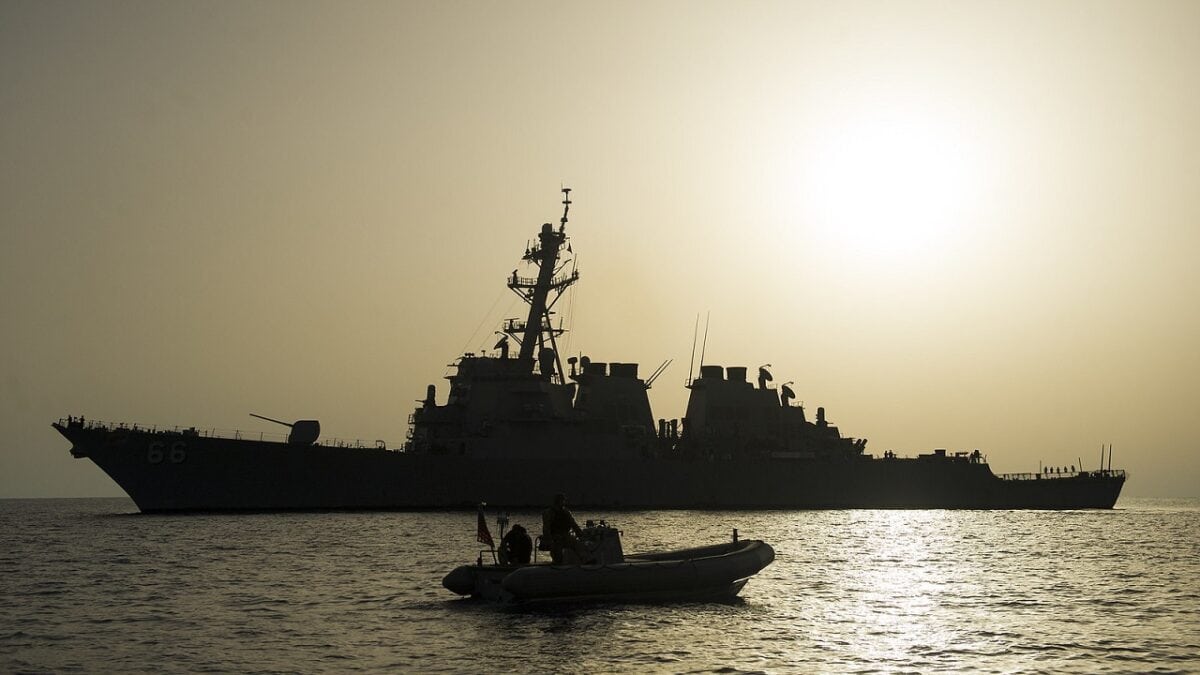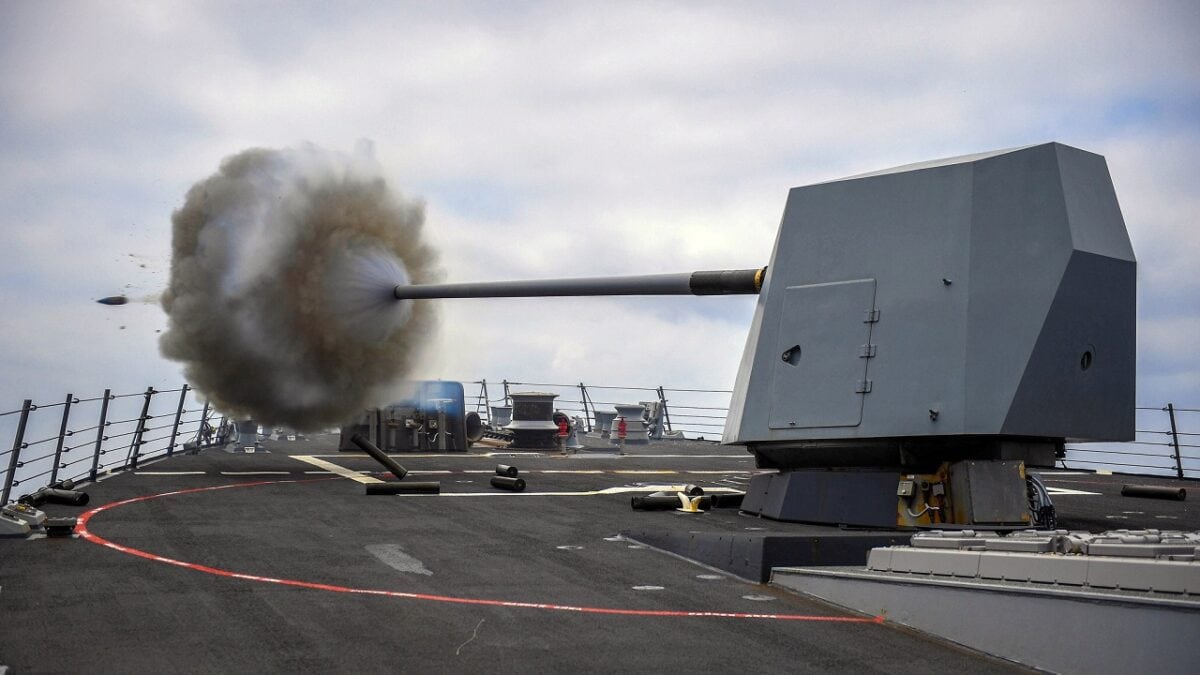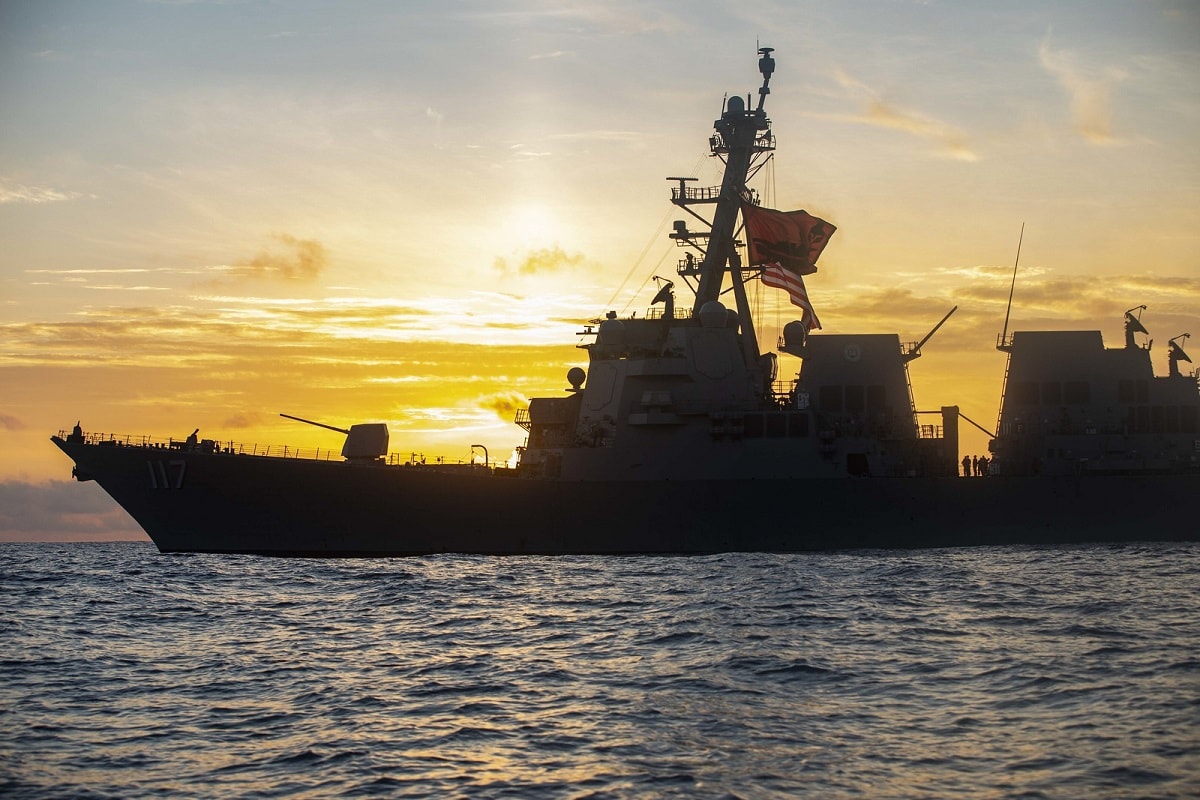It is starting to feel like the Cold War all over again in the Atlantic Ocean: The US Navy’s 2nd Fleet surged forces to the North Atlantic between January and April, responding to a request from the top US commander in the region amid heightened tensions with Russia.
The short-notice deployment was the first time 2nd Fleet has had command-and-control of forces in Europe outside of an exercise and it demonstrated the fleet’s flexibility and responsiveness, fleet commander Vice Adm. Daniel Dwyer told reporters on April 29.
Second Fleet was reestablished in 2018 in response to increasing Russian naval activity in the North Atlantic, but Dwyer avoided linking the deployment to Russia’s attack on Ukraine.
Asked whether the surge was connected to Russian military activity, Dwyer would only say that it demonstrated the US’s ability to “surge certified, ready naval forces” — as in, deploying ships whose crews are fully trained ahead of an anticipated departure date — and its commitment to the defense of European allies and partners.
During the deployment, 2nd Fleet, which is based in Virginia, had command and control of the destroyers USS Forrest Sherman, USS The Sullivans, USS Donald Cook, and USS Mitscher.
A fifth destroyer, USS Gonzalez, deployed from the US in January as part of the surge but was later redirected to the Mediterranean and then to the Middle East.
Dwyer also embarked Destroyer Squadron 22 as a forward command element aboard a destroyer and later on USS Mount Whitney, the flagship of the Navy’s Italy-based 6th Fleet, which 2nd Fleet had tactical command of and used to direct ships in the North Atlantic.
Second Fleet is officially responsible for the western Atlantic from the Caribbean to the North Pole, but it can also act as “a maneuver arm” for a four-star headquarters — in this case US Naval Forces Europe and Africa.
“At time of need I can surge forward and support a four-star naval headquarters with my maritime operations center commanding-and-controlling ships that are outside of my normal area of responsibilities,” Dwyer said. “This operation was the first time that we actually put it in practice, and we showed and proved that unique, agile, mobile capability.”
The US Navy has been trying to reacclimate crews to the high north and the Arctic, which are increasingly accessible but remain tough environments for sailors and ships.
Upon arriving in the region in February, “those crews did encounter weather they’re not accustomed to,” and the fleet took precautions so they could be safe and effective, Dwyer said. “But again, that builds that experience of those ships being able to operate in areas that they’re unfamiliar with.”
Over the following weeks, the US ships trained with the Italian, British, Danish, Polish, German, and Swedish navies in the North Sea and the Baltic Sea, conducting what Dwyer called “a full range of maritime missions, from maneuvering, from communicating, from establishing networks and links.”

GULF OF ADEN (May 17, 2016) Members of the visit, board, search and seizure (VBSS) team operate a rigid-hull inflatable boat (RHIB) alongside guided-missile destroyer USS Gonzalez (DDG 66). Gonzalez is currently operating with the Boxer Amphibious Ready Group in support of maritime security operations and theater security cooperation efforts in the U.S. 5th Fleet area of operations.

ATLANTIC OCEAN (June 30, 2018) The Arleigh Burke-class guided-missile destroyer USS Bainbridge (DDG 96) fires its Mark 45 five-inch gun during a live-fire exercise. Bainbridge, homeported at Naval Station Norfolk, is conducting naval operations in the U.S. 6th Fleet area of operations in support of U.S. national security interests in Europe and Africa. (U.S. Navy photo by Mass Communication Specialist 1st Class Theron J. Godbold/Released)180630-N-FP878-566
US Navy ships do extensive training on the East Coast, Dwyer said, “but to actually sail alongside a naval vessel from one of our NATO allies or one of our partners, you just can’t do that in training.”
“That live interaction — actually coming up on bridge-to-bridge and having that communication and then discussing how they’re going to execute the assigned mission together — is something you can’t replicate,” Dwyer added.
Avenues of approach
As head of both US 2nd Fleet and NATO‘s Joint Forces Command Norfolk, Dwyer is responsible for keeping open the ocean between North America and Europe.
While Dwyer did not link 2nd Fleet’s recent activity directly to Russia, NATO leaders have warned repeatedly about Russian naval activity and the risk it poses on both sides of the Atlantic. Dwyer’s predecessor led several exercises to simulate a contested transatlantic crossing.
Since reaching full operational capability in July, “JFC Norfolk has been actively monitoring the North Atlantic through to the Arctic to ensure NATO’s strategic transatlantic lines of communication remain open in order to support the sustainment of Europe,” Dwyer told NATO commanders this month.
NATO leaders have warned specifically about Russia’s submarines, which are more active and have new, longer-range weapons. US officials have said those subs’ presence in the Atlantic means the US mainland is “no longer a sanctuary.”
“In the past few years Russian submarine activity in the high north has already increased noticeably. This is a worrying development,” Iceland’s foreign minister, Thórdís Kolbrún R. Gylfadóttir, said in April.
Iceland sits in the middle of the Greenland-Iceland-UK Gap linking the Atlantic and the Arctic, where the ships and subs of Russia’s powerful Northern Fleet are based. NATO militaries have put renewed emphasis on that strategically important waterway.
“Iceland will do its utmost to facilitate the ongoing monitoring of such activities and any response that may be required,” Gylfadóttir said of Russian submarine activity.
That emphasis was reflected in Northern Viking 22, an exercise held in Iceland in April. Its focus on anti-submarine warfare was of “specific relevance,” according to German Navy Cmdr. Arne Pfingst, who said the GIUK Gap is of “great interest” to Germany’s Navy.
Second Fleet did not command forces involved in Northern Viking, but Dwyer, speaking to reporters in April, said the North Atlantic is “without a doubt” becoming “a more dynamic environment.”
Second Fleet’s mission is “to deter and defeat potential adversaries in our area of responsibility, wherever that happens to be,” Dwyer added. “At its core, it’s to defend the avenues of approach between Europe and North America.”
Christopher Woody edits and reports on defense and security issues. He is based in Washington, DC.

